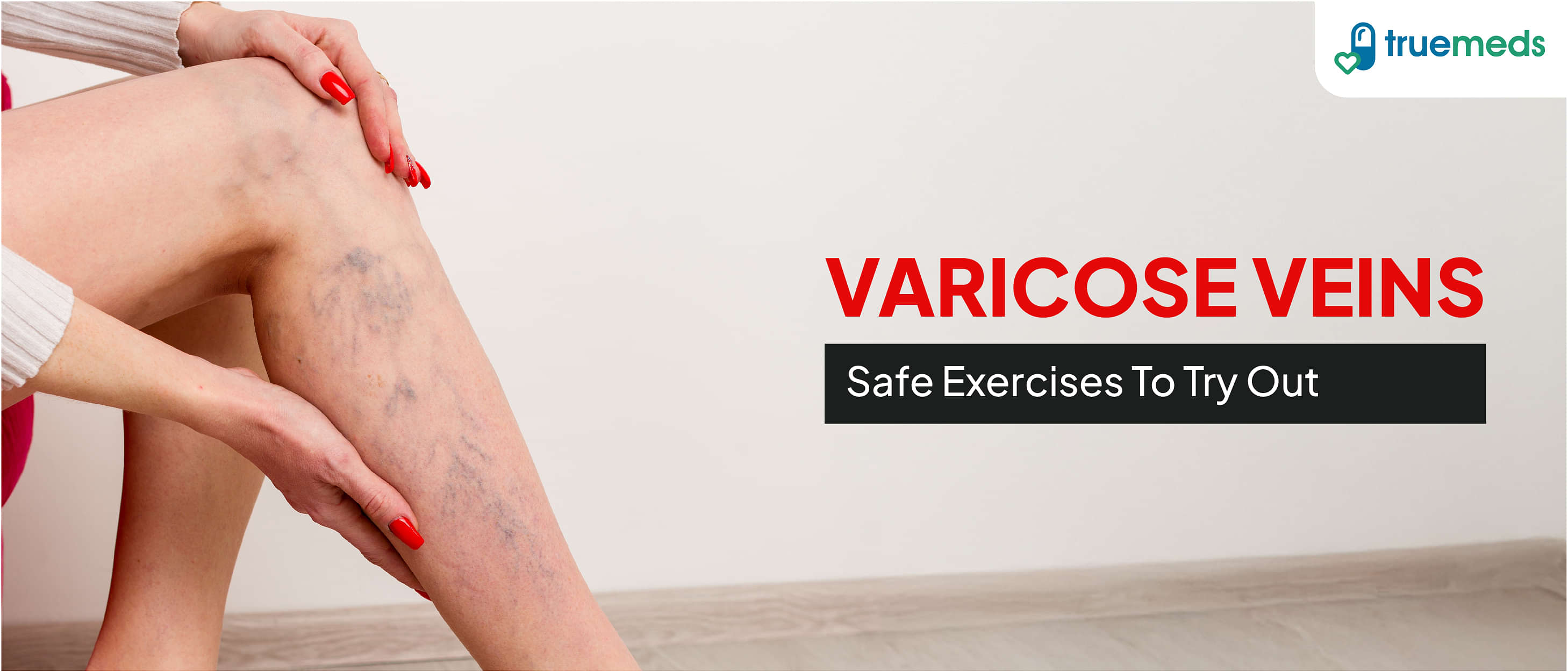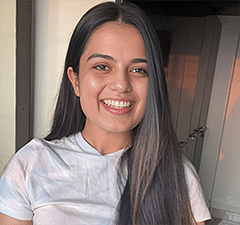Varicose Veins – 6 Safe Exercises To Try Out
Last updated on : 23 Oct, 2024
Read time : 8 min
Introduction
Varicose veins, symbolised by swollen and twisted veins, are a common issue primarily affecting the legs. The condition can lead to discomfort and aesthetic concerns. These occur when the valves in our veins weaken, causing blood to pool and the veins to enlarge. Factors such as genetic makeup, age, obesity, and prolonged periods of sitting or standing contribute to their development.
Although quite common, and often harmless, many individuals seek relief from the associated symptoms such as pain and swelling. This is where exercise for varicose veins comes into play. Regular physical activity is one of the most effective ways for varicose vein prevention and management. This article will explore six safe exercises that can support vein health and improve overall circulation.
Is Exercise Good for Varicose Veins?
Regular exercise can indeed work wonders if you are dealing with varicose veins. The question that often arises is, “What exercise is best for varicose veins?” The answer is quite simple. Any exercise that promotes blood flow and strengthens your leg muscles can be beneficial. Here’s why certain exercises can be beneficial:
- Improved Blood Flow: Exercise essentially improves blood circulation throughout the body. This helps reduce the chances of blood pooling in the veins, a common issue with varicose veins. Therefore, the objective of any varicose exercise should be to enhance blood flow and prevent further enlargement of these veins.
- Strengthened Leg Muscles: Your calf muscles play a crucial role in pushing blood upwards, working against gravity. Engaging in activities like walking, cycling, and swimming, can strengthen these muscles and improve their pumping action.
- Weight Management: It’s no secret that maintaining a healthy weight is essential for overall well-being. In the context of varicose veins, it becomes even more critical as it reduces pressure on the veins in your legs. This enables blood to flow back to your heart more efficiently.
- Symptom Relief: Regular exercise can alleviate common symptoms associated with varicose veins such as swelling, pain, and cramping.
- Prevention: If you’re prone to varicose veins or have an unhealthy lifestyle, regular exercise can help. It promotes good vascular health and may prevent varicose veins from developing.
However, it’s important to remember that while beneficial, exercise alone cannot cure varicose veins completely. It can provide significant relief from symptoms and prevent their progression, but it’s not a substitute for medical treatment. If your varicose veins are severe, it is advisable to consult with a vascular specialist or family doctor.
Exercises for Varicose Veins
Regular exercise can play a key role in managing and preventing varicose veins.
Exercise can help by boosting circulation and strengthening your leg muscles. This reduces symptoms and supports vein health. Here are some effective exercises to consider incorporating into your routine:
1. Walking
A simple yet effective exercise for varicose veins is walking. Known as a low-impact exercise, walking can help improve your calf muscle’s pump action, enhancing blood circulation. Not only does it strengthen your leg muscles, but it also reduces symptoms of varicose veins like pain and swelling.
Doctors recommend walking for at least 30 minutes, which can be broken up into shorter segments throughout the day. For those suffering from varicose veins, consider walking as your go-to exercise. It is easy on the joints and helps move blood back to the heart.
2. Running
While running is excellent for overall cardiovascular health, it might not be the preferred varicose vein prevention exercise for everyone. Due to its high-impact nature, running can exert excessive strain on the veins and potentially worsen symptoms. Therefore, avoid engaging in high-intensity interval training (HIIT) workouts, if you have severe varicose veins. Such exercises involve short periods of intense activity. Avoid these intense activities because they can increase pressure on the legs.
3. Leg Lifting
Leg lifts are simple exercises that can be easily added to your daily routine. All you need to do is lie on your back with your legs straightened out. Following that, lift one leg and hold it in the air for a few seconds before slowly lowering it. Repeat this with the other leg. Not only does this exercise help stretch your leg muscles, but it also encourages better blood flow.
4. Cycling
Cycling is a low-impact exercise that strengthens your calf muscles, which is helpful for varicose veins. You could choose to cycle outdoors or use a stationary bike indoors based on your preference. However, be mindful of your posture and duration.
Long cycling sessions with bent-over handlebars can cut blood flow to your legs.If you don’t have a bike, you can try “bicycle legs”. To do this, lie on your back with your legs raised and bent, then pedal in the air as if riding a bike.
5. Ankle Exercises
If your job or lifestyle requires you to sit for long periods, ankle exercises could be beneficial. Moving and stretching your ankles can stimulate blood flow through your legs and into your feet. Try rotating your feet at the ankles, making small circles in both directions. The repetition of this exercise helps improve overall lower-body circulation.
6. Swimming
Swimming is considered one of the best varicose exercises. The low-impact nature of swimming exerts minimal strain on the legs. Also, the water provides gentle resistance that can help improve circulation. Plus, the buoyancy of water also relieves pressure on the veins. It is advisable to avoid swimming in hot water, as it can cause the veins to dilate and potentially worsen the condition.
Exercise to Avoid with Varicose Veins
Exercise is a wonderful tool for maintaining good health. However, if you’re dealing with varicose veins, some exercises might do more harm than good. Let’s check some of these exercises.
1. Avoid Lifting Weights
While exercise is generally good for your health, some activities, such as heavy lifting, can trigger or worsen your varicose veins. This happens because such exercises can increase intra-abdominal pressure, causing blood to pool in your legs. If you enjoy strength training, focus on low-impact exercises for your upper body and core. Avoid heavy lifting that strains your legs.
2. Avoid Squats and Lunges
Squats and lunges are common exercises that involve bending the knees and hips. Unfortunately, these movements can place significant pressure on the veins in your legs, leading to blood pooling and worsening varicose symptoms. If you are already dealing with severe varicose veins, it’s advisable to skip these exercises altogether. Try low-impact leg exercises like walking, cycling, or even swimming.
3. Avoid Excessive Running
Running is a fantastic cardiovascular exercise but it can also stress out your legs. The high-impact nature of running may cause your blood to pool in the veins and exacerbate varicose vein symptoms. If you have severe varicose veins, consider avoiding running altogether and focusing on low-impact exercises like walking or cycling.
Warning Signs Your Exercise Might Worsen Varicose Veins
- Increased Pain or Discomfort: Sharp or worsening leg pain, swelling, or discomfort during or after exercise could mean too much strain on your veins.
- Visible Changes in the Veins: Look for more bulging, swelling, or redness in your veins after exercise.
- Heaviness or Fatigue: A heavy, tired feeling in your legs might indicate the exercise is aggravating your veins.
- Cramps or Spasms: Muscle cramps, especially in the calves, may worsen with heavy activity.
- Worsening Symptoms: If itching, burning, or restless legs intensify after exercise, the activity may not be suitable.Stop the exercise and consult your doctor if you notice these signs.
Conclusion
Managing varicose veins doesn’t necessarily require medical intervention. Simple lifestyle modifications, including specific exercises, can make a significant difference. With these six safe exercises for varicose veins, you’re well on your way to healthier veins and improved circulation. Always remember, that consistency is key in seeing significant improvements.
FAQs
Low-impact exercises like walking, cycling or swimming are considered the best varicose exercises. They promote blood circulation without straining your veins.
An elliptical trainer or a stationary bike can be beneficial for varicose veins. These machines offer varicose exercise options that are low-impact and help facilitate good blood flow.
High-impact workouts like weighted squats, lunges, or high-intensity training should be avoided, as they can exacerbate the strain on your veins.
Yes, climbing stairs can serve as an effective varicose vein prevention exercise. It helps improve leg strength and promotes healthy blood circulation.
References
Disclaimer
Our healthcare experts have carefully reviewed and compiled the information presented here to ensure accuracy and trustworthiness. It is important to note that this information serves as a general overview of the topic and is for informational purposes only. It is not intended to diagnose, prevent, or cure any health problem. This page does not establish a doctor-patient relationship, nor does it replace the advice or consultation of a registered medical practitioner. We recommend seeking guidance from your registered medical practitioner for any questions or concerns regarding your medical condition.
Popular Articles
Recommended Articles
Recent Articles
Top-Selling Medicines:
...View more
Top-Selling OTC:
...View more
Subscribe
Registered Office Address
Grievance Officer
Download Truemeds

Contact Us
Our customer representative team is available 7 days a week from 9 am - 9 pm.
v3.5.16
Our Payment Partners

























































